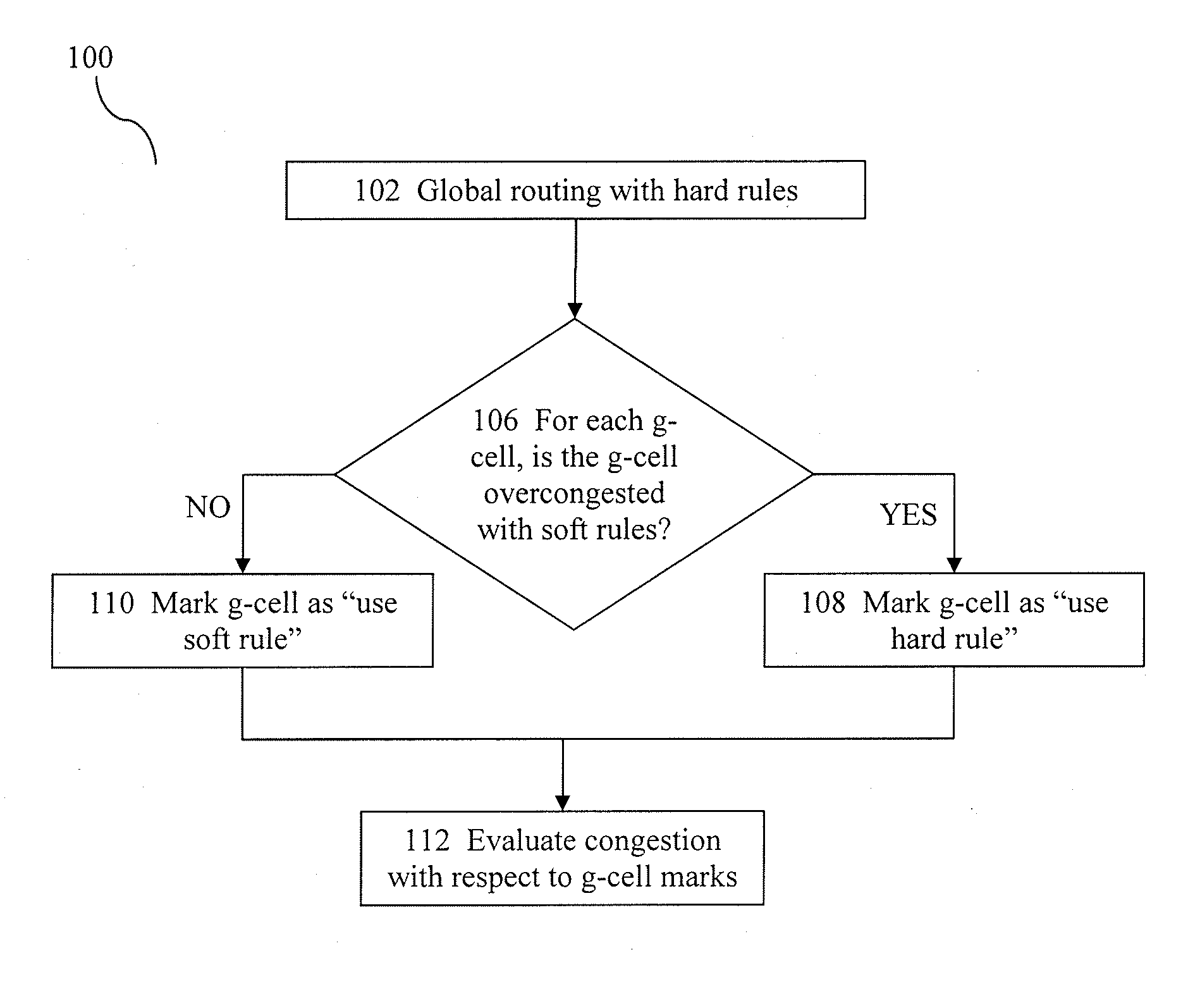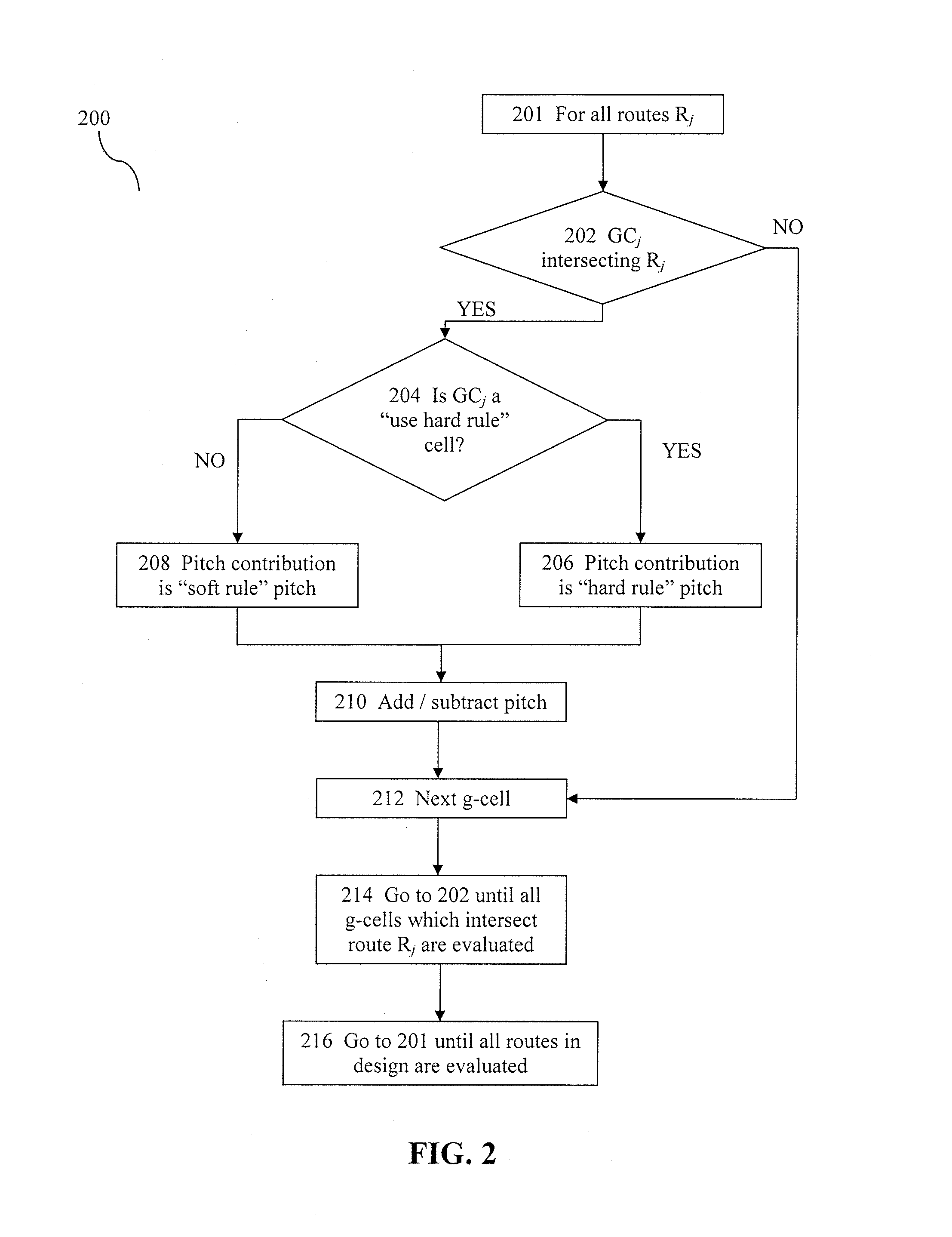That is, a
router fails when two pins on the same net that should be connected are open, when two pins on two different nets that should remain open are shorted, or when some design rules are violated during routing.
Nonetheless, the Lee
algorithm is also known to be slow and memory intensive.
As such, the application of Lee algorithm to electronic designs over a certain size is oftentimes impractical.
If there is a large number of overcongested g-cells the detailed routing may fail.
These rules in the presence of RET and other manufacturing constraints have become overly restrictive.
Currently, most of the design rules are hard and “digital” constraints with a few exceptions such as the timing rules; that is, these design rules must be either obeyed or violated.
Moreover, since the design rules are oblivious of the design requirements or the
design intent of any particular
electronic circuit designs, non-selective adoption of all of the design rules are usually overly pessimistic.
It may be impossible to
route a
chip using only the preferred rule because of the extra area involved.
Nonetheless, such requests for more space for wires may render routing impossible at times because of the extra space requested.
One common problem which a
router faces is when both the hard rules and the preferred rules are present.
The shortcoming of waiting until detailed routing is that adequate routable space is not reserved early in the process so opportunities to apply the preferred rules may be lost.
On the other hand, these increasingly complex design rules
impact detailed routing, and the loss in
design tool quality and productivity have resulted in increased project uncertainty and manufacturing non-recurring
engineering costs (NRE costs).
As a result, global routing has grown increasingly more complex as the
integrated circuit designs and the manufacturing processes advance.
As another example, in deep sub-micron regime, resolution enhancement techniques (RET) such as OPC (
optical proximity correction) and PSM (
phase shift mask) may also make routing more complicated as OPC and RET may create additional design rule violations as more wires will become fat wires.
Also, OPC rules may produce more wiring and hence causes spacing and congestion problems.
Furthermore, in incorporating the PSM technologies, phase assignment by router may also cause spacing as well as width issues.
In addition, off-axis illumination (OAI) rules may produce more wiring and hence causes more spacing and congestion problems.
All these RET technologies present more challenges to the global routers.
However, these RET techniques also cause negative
impact on routing.
This, however, creates more wiring, vias, and thus congestion.
This halation effect results in jogs in wiring and thus inevitably creates congestion.
This approach involves, however, laborious and often manual efforts and lacks accuracy in terms of design rule marking which inevitably causes wastes of
computational resource at the routing stage.
Another drawback of this approach is that adequate routing space is not reserved early in the routing process, and thus opportunities to apply the preferred rule may be lost as a result.
This drawback of this latter approach is, again, the inevitable waste of
computational resource as it proceeds through the detailed routing before each region is appropriately marked.
Also, the spacing checker takes time and may mark routing violations that could have been avoided if the router attempted to adhere to the preferred rule.
In addition, another issue which negatively impacts the applicability of this latter approach is that most routers do not honor such a region rule.
 Login to View More
Login to View More  Login to View More
Login to View More 


